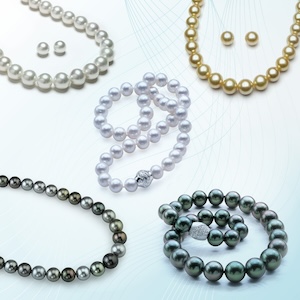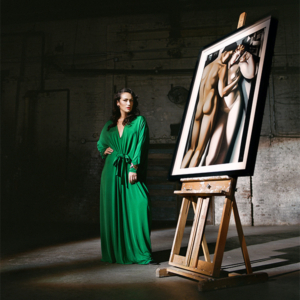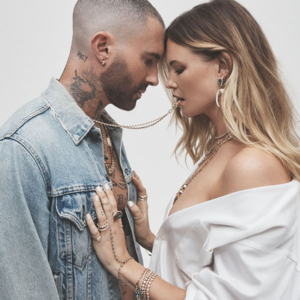
When Twist, the design-focused jewelry retailer with stores in Portland, Ore., and Seattle, features a new designer on its website, owners Paul Schneider (pictured) and Lauren Eulau have a chat with the newbie to set expectations.
“When we put you up, you’re going to have people start calling you,” Schneider tells the designer. “You’re getting exposure. Be ready for it.”
That’s an understatement. To land a placement on Twist’s hugely influential designer roster—now totaling 115 of the industry’s most beloved, copied, and daring creators—is a career-defining moment for any jeweler.
We spoke to Schneider, winner of the 2020 Gem Award for Retailer of the Year, about his take on spring fashion trends, the emerging designers he’s got his eye on, and what sets his site apart from the masses.
“New sites are all consignment, everything’s drop-shipped,” he says. “They don’t own inventory. We own it all. It’s so old-fashioned. But we can afford to do it because we’ve been doing it so long.”
The interview has been edited and condensed.
How was 2020 for you?
It was extraordinary. Our online business went through the roof. The jewelry industry did pretty good, all things considered, relative to entertainment and hospitality and fashion.
Orders built up [after the first lockdown] and stayed up. We did double and a half more than the year before—which was our best year ever. Brick-and-mortar were down for the year but up for the first quarter. We had riots and we had fires, and snow and ice and wind. But the stores did well. And the website propelled us into our best year ever.
What’s your take on 2021 so far?
The first quarter, which ends in a week, will be the best first quarter we’ve ever had. In 40 years. The website was a real part of that. We’ve established some real credibility online. And the experience on our site of seeing things that are interesting and affordable and on-trend, the videos and everything—customers trust that if we’re putting it on the site, they don’t have to check it. We’re selling a lot of very inexpensive stuff but also very expensive stuff, where people we’ve never heard of are clicking and buying pieces over $10,000.
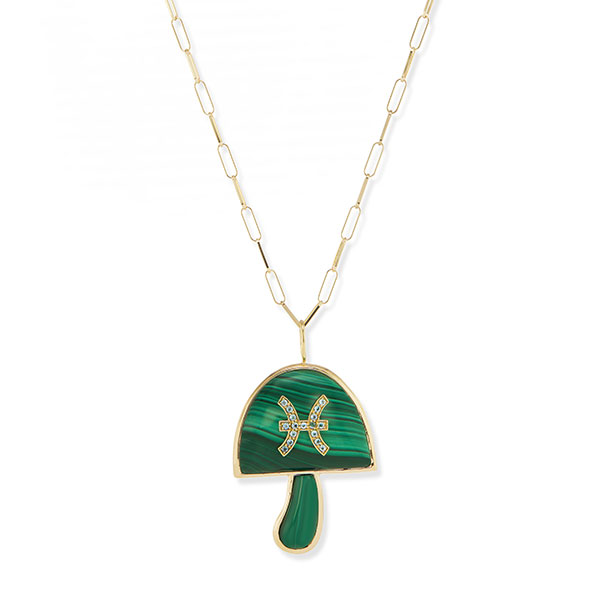
How are you different from other jewelers?
What separates us from a lot of the traditional jewelry stores: Our store is oriented for women self-purchasing. That’s our customer, that’s what we do. That’s not the history of traditional jewelry stores, where it’s men buying for women. Women buying for themselves was usually costume jewelry. Our customers are independent women making decisions for themselves—they don’t need anyone’s permission to buy.
When did you realize that’s what your business was about?
It was not a conscious decision by any means; it was an evolution. That realization came to me fairly recently. We started out as artists ourselves, Lauren and I, and we evolved into an outlet for other craftspeople, then into an outlet for craft jewelry. We’re continually evolving. I don’t know where we’re going to be next. We’re just trying to do what feels good. As we get older, we’re indulging our tastes. Obviously, the decisions we make are business decisions. But we’re so used to doing what’s new and interesting, we’ve always just followed our instincts.
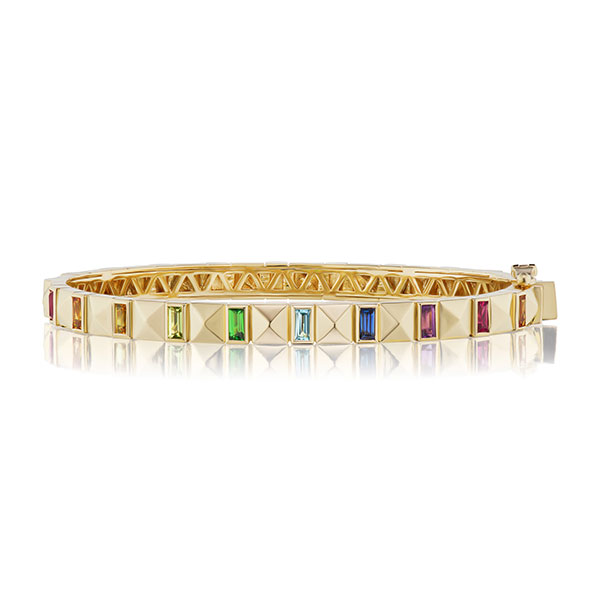
And when did the website become such a force?
It’s been 10 years since we started a website. But websites in those days were dial-up. All it had was pictures of stuff that didn’t load well. It was our second site where you could buy from. We’ve had five platforms. Now, like the rest of the industry, we’re on Shopify. That’s it, there’s nothing else. It’s cheap, secure, it’s got all these things you can do to it. It’s absolutely safe. It’s like Amazon, you can’t beat it. Ours probably costs $200,000. We have five people full-time on our website. We’re in full bore. This is a store. That’s probably the reason we did so good. Most stores that have websites, they’re handling it through their store, fulfilling orders in the back room, then coming back out to the store. Ours is a whole separate P&L.
What are the trends you’re noting for 2021?
Earrings are really, really strong; pendants are really strong. Bracelets are tougher. Personally, the whole thing about the teeny tiny invisible jewelry is still there but not like it was. Young people like it, it’s inexpensive, it fits their personalities. But I think there’s permission to buy bigger jewelry. We’re seeing a lot more colors, for sure—vivid, clean colors like enamels. People are not afraid to buy gold with enamel. That’s huge.
What about specific designers that are doing well for you?
Brent Neale is huge for us. Boy, she has a different approach to fine jewelry, and I think it’s amazing. She’s so confidently, elementally whimsical yet still has so much reverence for the stones and the techniques. Think of a Gucci dress or a Gucci blouse—what jewelry would you wear with that that doesn’t look ridiculous? Wear one of her mushrooms. It’s luxurious and happy. Women buy it with such glee.
Harwell Godfrey—she’s amazing, plus she’s a woman of color. The origins of her jewelry are in African design. Do you know Jean Prounis? Her work is very evocative of historical jewelry, but it’s got a life to it. And then, of course, you’ve got people like Pippa Small. We’ve been working with her for like 15 years. When she’s doing a trunk show, she’s so radiant and tall, women will just come up to her and confess things. Then they’re crying, then they’re putting jewelry on, then they’re pulling out their Amex. And Nada Ghazal, from Beirut—her Bonbon earring is really cool.
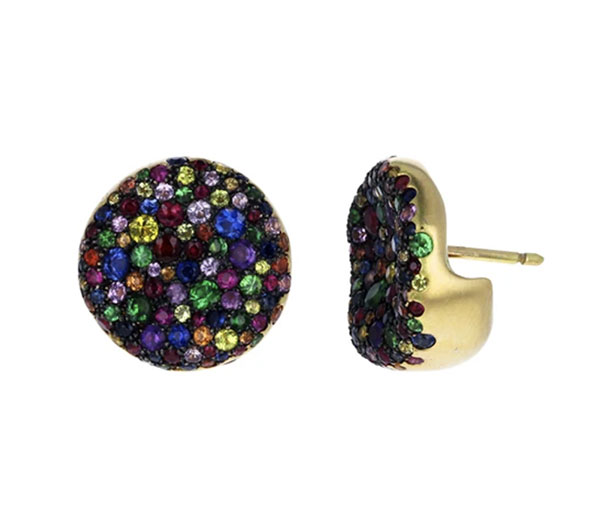
Anything else shaping up as a strong seller for ’21?
A trend that’s still developing is this curated ear. Women wearing multiple unbalanced collections on their ears, all tied into layering. They started layering necklaces, bracelets, and rings; now they’re layering ears.
The whole idea of layering—I couldn’t stand the neck mess. I thought it took really beautiful jewelry and tied it in knots. I think people are backing off and doing a lot more intentional things, making really good compositions.
Do you see piercing events coming back anytime soon?
I do. When I was a kid, piercing was either in a doctor’s office or a jewelry store. Then it quit being in fashion. And you had to go to tattoo stores. As this has evolved into a thing, this trend for multiple piercings, a lot of women that wouldn’t feel safe going to a tattoo parlor don’t have anywhere to go. It needs to evolve back to the jewelry store. I don’t think it’s going away at all, it’s too easy, too fun. It’s a great way for even more modest women to express themselves, and a lot of our customers are really straight women, and it’s really fun to guide them. Then they’re so proud of themselves.
Does that mean you’re selling a lot of ear studs?
Now it’s all kinds of things: hoops, chains, drops. Go to Maria Tash, she’s the queen.
Anyone new on your radar?
Have you seen Castro Smith? This guy is a savant. He’s a master and a beautiful man. We literally tracked down his studio in London, walked all day to find him. We put him on the front of the website and have really featured him.
Right now, on the cover of our website, we’re featuring Fraser Hamilton. I just love his jewelry, it’s so cool. Some of his rings look like they’re wrapped out of rags. I found him on a British jewelers guild website.
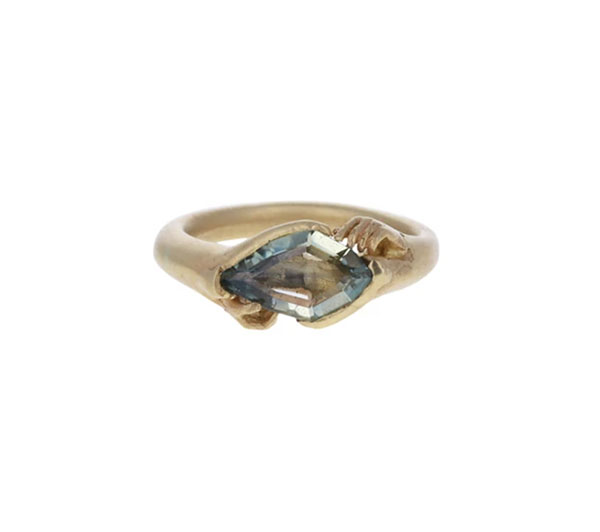
Given all of your success selling online, what do you make of the future of selling jewelry via brick-and-mortar?
My take is that people love going shopping and they love good stores. The day of the half-assed store is numbered. Because if the experience is at all challenging—if the store is dirty, people aren’t paying attention, the merchandise is old—people don’t need to go there.
But if the experience is rich, uplifting, you want to do it. We call it retail abuse: You expect to go in a store to be ignored, patronized, or watched over. Why would you want to do that? The great stores are becoming rarer. If you’re going to do retail, you’ve got to up your game. Invest in your store because you’re competing with the universe. But you can compete really well if you’ve got a good location, good customer service. People want to get out.
And another thing: Your salespeople have to be on commission. They have to have skin in the game. Our staff is so dedicated to their customers. It’s a symbiotic relationship—they need each other.
Follow JCK on Instagram: @jckmagazineFollow JCK on Twitter: @jckmagazine
Follow JCK on Facebook: @jckmagazine

